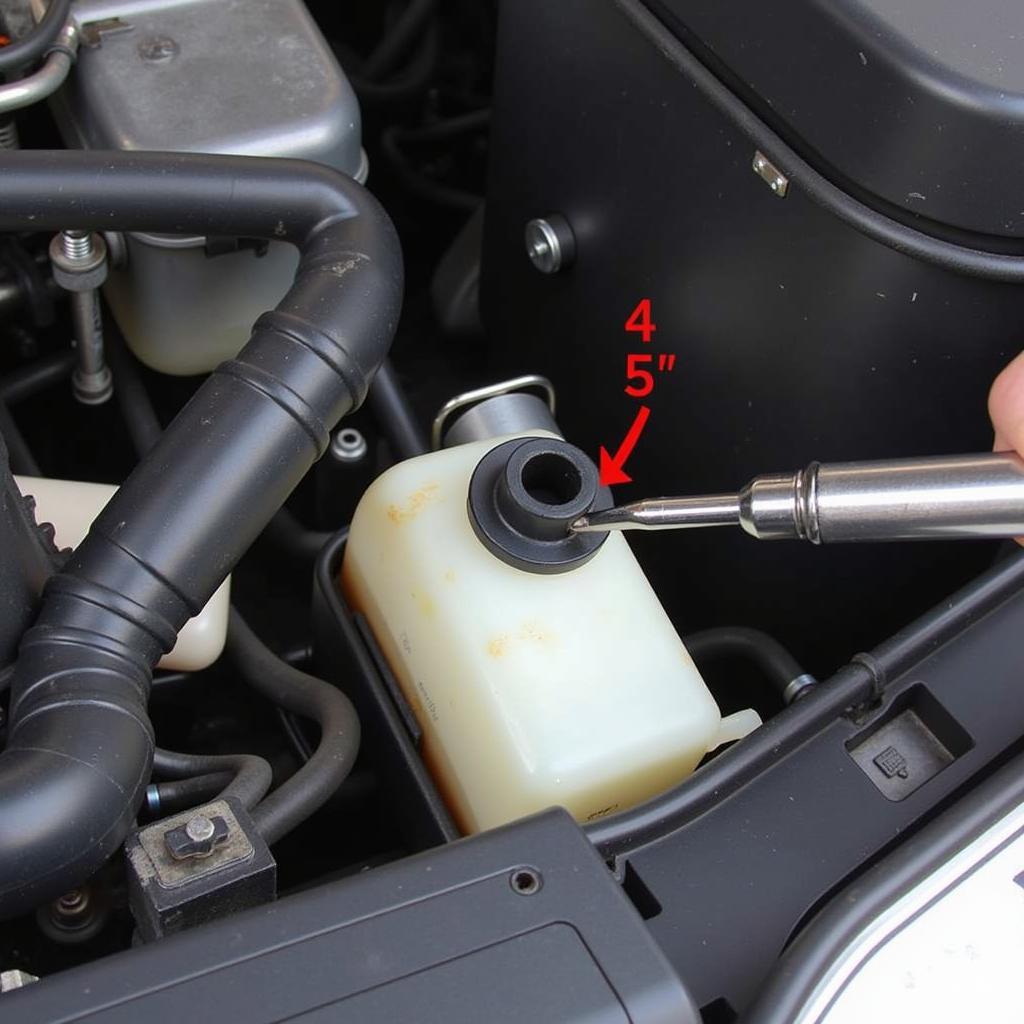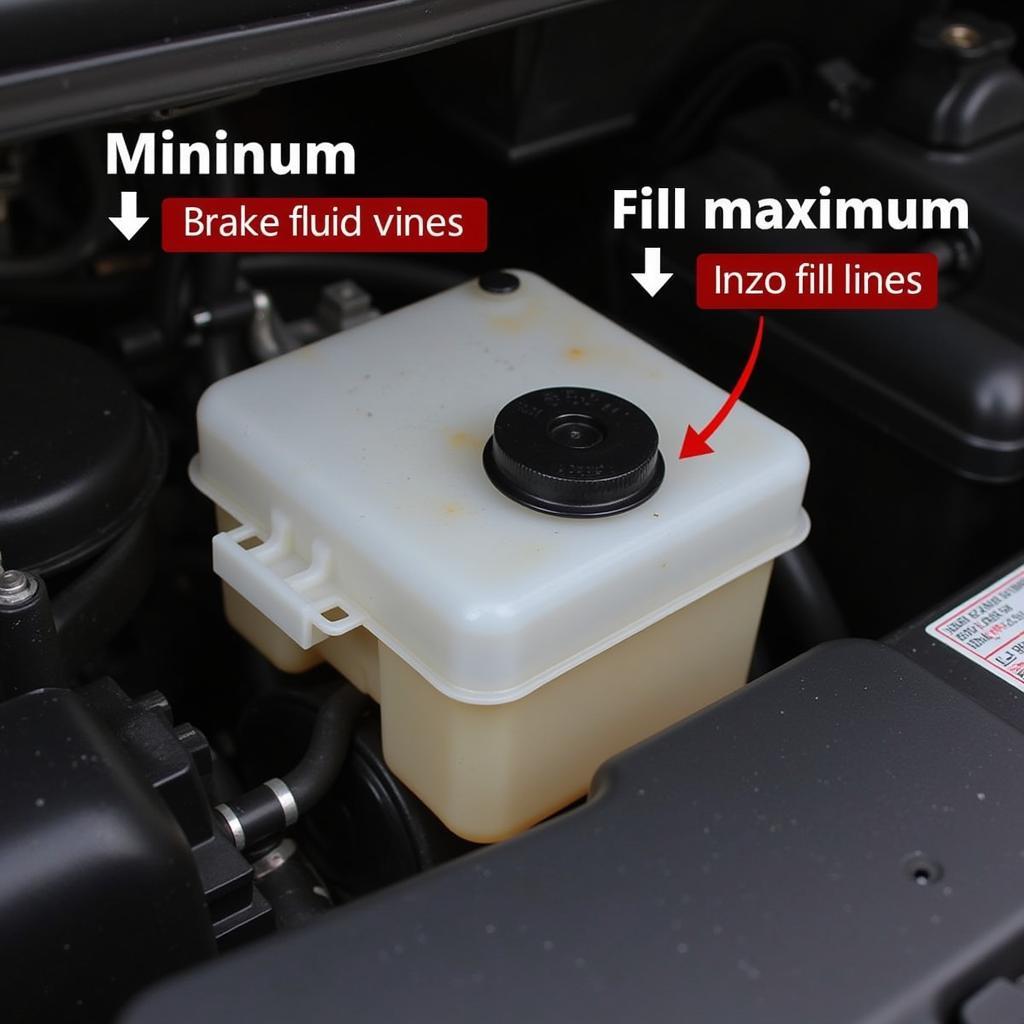The dreaded “check brake light” warning on your Hyundai Tucson dashboard can be a real headache. This article dives deep into the causes of this warning light, offering DIY solutions and professional remote diagnostics options for a quick and efficient fix. We’ll cover everything from simple bulb replacements to more complex electrical issues, empowering you to tackle this problem head-on.
If you are experiencing a brake warning light on your Hyundai Tucson, it’s important to address the issue promptly. Ignoring the warning could lead to safety risks and potentially more costly repairs down the line. This guide will help you understand the most common causes and provide steps for troubleshooting. For owners of older models, you might find resources for similar brake light issues helpful, such as information available for the e36 brake fluid warning light.
Understanding the Hyundai Tucson Brake Light Warning
The “check brake light” warning in your Hyundai Tucson illuminates when the car’s onboard computer detects a fault in the brake light system. This could indicate a range of issues, from a simple burnt-out bulb to a more serious problem with the wiring or brake light switch. Understanding the potential causes is the first step towards finding a solution. Contact Here for Free Video Tutorial.
Common Causes of the Warning Light
- Burnt-out brake light bulbs: This is the most frequent culprit. Brake light bulbs have a limited lifespan and will eventually burn out.
- Faulty brake light switch: The brake light switch, located under the brake pedal, activates the brake lights when the pedal is pressed. A malfunctioning switch can prevent the lights from illuminating.
- Wiring problems: Damaged or corroded wiring can disrupt the flow of electricity to the brake lights, triggering the warning light.
- Blown fuse: A blown fuse in the brake light circuit will also prevent the lights from working.
- Trailer wiring issues (if applicable): If your Tucson is equipped with a trailer hitch, problems with the trailer wiring can sometimes affect the brake light system.
 Hyundai Tucson Brake Light Location
Hyundai Tucson Brake Light Location
Troubleshooting the Hyundai Tucson Check Brake Light Warning
Before rushing to a mechanic, there are several checks you can perform yourself. These simple DIY steps can often save you time and money.
Checking the Brake Light Bulbs
- Locate the brake light bulbs at the rear of your Tucson.
- Carefully remove the bulb socket.
- Inspect the filament for breaks. If the filament is broken, the bulb needs to be replaced.
Inspecting the Brake Light Switch
- Locate the brake light switch under the brake pedal.
- Visually inspect the switch for any signs of damage or wear.
- If the switch appears damaged, it likely needs replacing.
Checking the Fuses
- Locate the fuse box for your Tucson (refer to your owner’s manual).
- Identify the fuse related to the brake lights.
- Inspect the fuse for any signs of being blown (a broken filament). Replace if necessary.
“Regular maintenance is key to preventing brake light issues,” advises automotive expert, John Miller, ASE Certified Master Technician. “A quick visual check of your lights every few weeks can catch problems early.”
If these initial checks don’t resolve the issue, the problem may be more complex, requiring professional diagnosis. Remote diagnostics and software solutions offer a convenient and efficient way to pinpoint the problem.
Remote Diagnostics and Software Solutions
Modern vehicles, like the Hyundai Tucson, are increasingly reliant on software and electronics. Remote diagnostics allows experienced technicians to connect to your vehicle’s computer system remotely, analyze error codes, and identify the root cause of the “hyundai tucson check brake light warning.” This approach can often save time and avoid unnecessary trips to the repair shop. You might also want to compare similar issues on other models, such as the audi tt seat belt warning light. This can sometimes give you a broader understanding of the potential problems.
Benefits of Remote Diagnostics
- Convenience: No need to take your car to a shop.
- Speed: Diagnostics can often be performed quickly, saving you valuable time.
- Accuracy: Remote diagnostics tools can pinpoint the exact problem.
- Cost-effective: Potentially less expensive than traditional diagnostic methods.
“Remote diagnostics and software programming offer a powerful approach to modern car repair,” says Sarah Chen, Lead Software Engineer at AutoTech Solutions. “We can often resolve issues remotely, minimizing downtime for the car owner.”
Conclusion
The “hyundai tucson check brake light warning” can be caused by a variety of factors, ranging from a simple burnt-out bulb to more complex electrical issues. By following the troubleshooting steps outlined in this article, you can often identify and fix the problem yourself. However, for more challenging issues, remote diagnostics and software programming offer a convenient and effective solution. Addressing the warning light promptly is crucial for your safety and the longevity of your Hyundai Tucson. Don’t delay, take action today. For similar issues with other Hyundai models, you might find information about the 2016 hyundai tucson brake warning light or the general hyundai tucson brake warning light useful.
Remember to always prioritize safety and consult a qualified technician if you are unsure about any repair procedures. Checking your brake lights regularly and addressing any warnings promptly can help prevent more serious problems down the road. You can also look for more specific information related to your Tucson’s model year, such as the 2017 hyundai tucson brake light warning.



